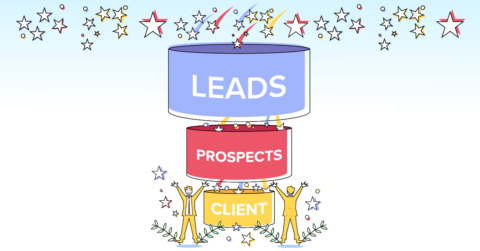
Using Emotions In Fundraising
09/07/23
Digital Marketing
Connecting with donors is essential if you want to run effective fundraisers. That’s why using emotions in fundraising is so important.
Done correctly, appealing to emotions can not only motivate potential donors, but inspire them to action. Donors will also stay more engaged with your organization and become more invested in what you have to say.
Our latest blog post will explore the significance of using emotions in fundraising. We will also give you five ways you can effectively appeal to emotions in your campaigns.
Why Emotions Are So Important for Effective Fundraising
Let’s first cover three reasons why using emotions in fundraising is so important. After that we’ll cover three ways you can get started today.
Build Personal Connections
Emotions play a pivotal role in more deeply connecting with your donors. When donors feel emotionally invested in a cause, it changes how they view themselves. No longer are they mere contributors to a cause, but rather partners in a mission. With the personal connection that emotions create, you can create a sense of shared purpose and belonging. This fosters long-term donor loyalty.
Motivate Donor Action
Ultimately, even the most well thought-out fundraiser is a failure if it doesn’t get people to act. Emotions are where you cross the barrier from “thinking about donating” to actually donating. That’s because emotions are not only important, but necessary to get people to do anything. When donors are emotionally moved by a nonprofit’s mission and impact, they are more inclined to take action. This action might include making a donation, attending fundraising events, or even becoming advocates for the cause.
Differentiate Your Organization
In today’s digital age, nonprofits face fierce competition for donor attention. More organizations are taking content marketing seriously, and perhaps even investing in paid ads. How do you stand out? By using emotions in fundraising! By crafting emotionally-charged messages and campaigns, nonprofits can cut through the noise and leave a lasting impression on potential donors. Emotions make your organization’s cause memorable and compelling – which ultimately makes your organization the one that gets remembered.
3 Ways to Use Emotions in Fundraising
1) Share Personal Success Stories
Who has been positively impacted by your nonprofits work? What challenges did they previously have, and how has your organization helped in overcoming them?
These are personal success stories, and you want to share them as much as possible. The reason this is a great way to use emotions in fundraising is that it proves that your organization actually does what it says. This is essential in quieting the natural doubt that people will have.
This doubt is often the biggest thing preventing people from donating to a fundraiser is simply doubt. How are you going to spend their money? Does your organization actually do what it claims? Even if it does, how can a new donor be reassured that they are donating to a good cause?
Success stories are the answer because they build trust. Highlight the stories of individuals whose lives have been positively impacted by the nonprofit’s work. Whether it’s a beneficiary of the organization’s programs or a volunteer with a powerful experience, sharing these stories humanizes the cause and creates an emotional connection with donors.
2) Implement Powerful Imagery
Of course, you can always describe things in the written word. And when it comes to a technique like storytelling, that can be a powerful strategy.
That said, visuals have the power to evoke emotions more effectively than text alone. That’s because they actually show things that written words alone cannot. Once you get the pictures or videos correctly – the possibilities for evoking emotion are endless.
Here are some options you might consider:
- Pictures of direct beneficiaries along with interviews on the positive impact your organization has had in their lives
- User-generated content like videos of volunteers at your organization
- Video interviews with past donors about how proud they are to have contributed to your cause
In addition, imagery and visuals are great for social media marketing, if that is something your organization wants to invest in.
3) Include Social Proof
We have talked about the power of social proof numerous times. As we mention, put the right social proof on your website (or any of the platforms where your organization is active), and you can expect good things.
Most importantly, though, social proof is one of the most reliable ways to use emotions in fundraising. That’s because it sets people at ease about everything you say in your marketing. Oftentimes, messaging from nonprofits about the work they do can come across as overly optimistic. Potential donors might interact with your organization and come away feeling as if there’s no way you can actually do what you claim.
Social proof is how you fix this problem. Highlight the number of lives changed or communities transformed. Dive deep into the various projects your organization has successfully funded, as well as the bonafid results that you enabled.
The purpose of all of this is to demonstrate the power of collective giving. More specifically, however, you want to make your audience feel like their donation really can make a difference. And that’s exactly what social proof does!
…
Are you an enterprise, nonprofit or small business looking for help on your website? Give us a shout! We provide a free consultation. Email us at info@lughstudio.com or call us at (718) 855-1919!









